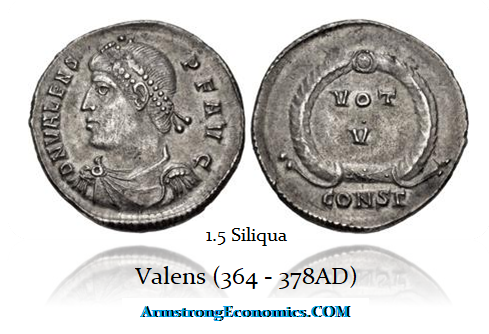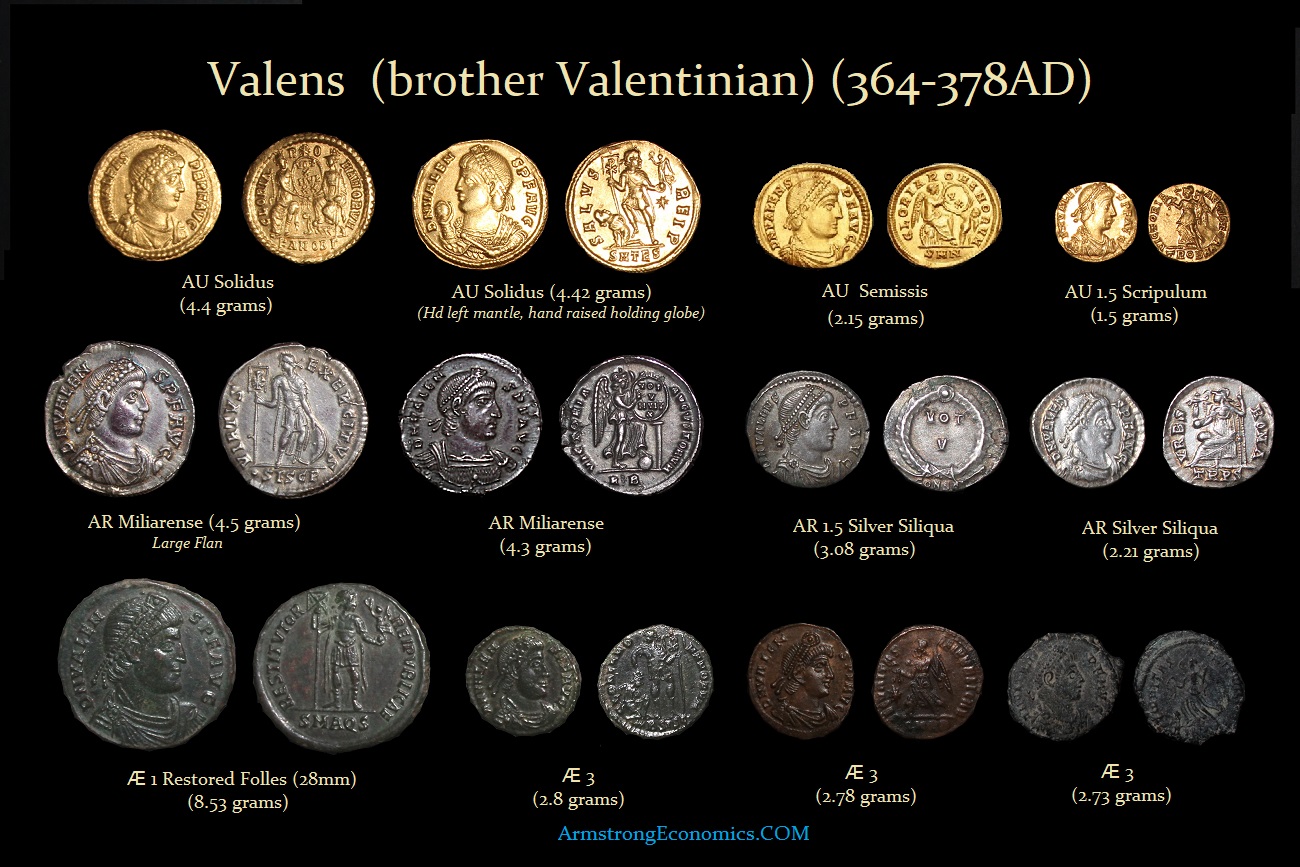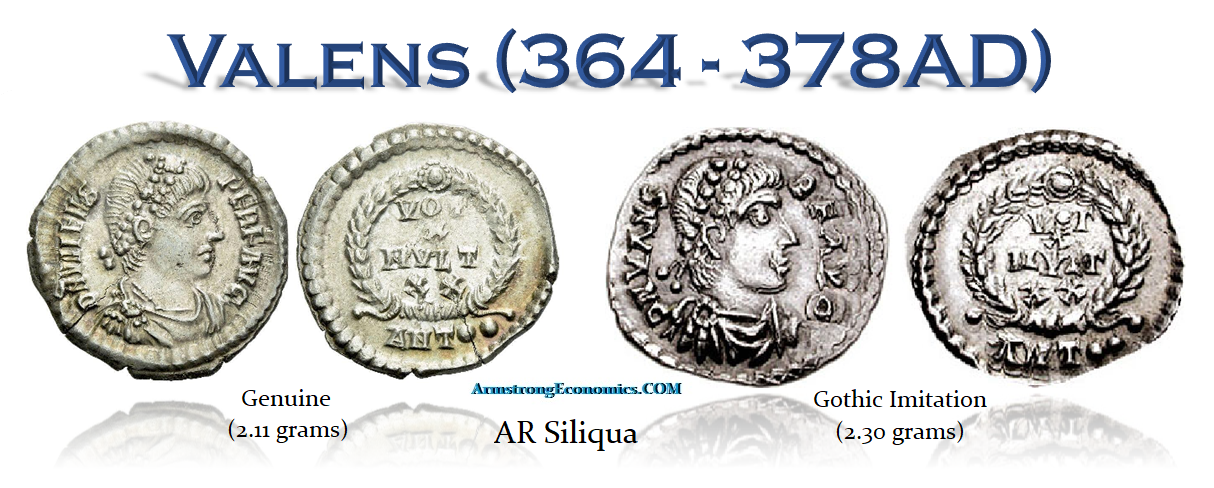Valens
364-378 AD
Emperor in the East
Flavius Valens was the younger brother of Valentinian I, born in 328 AD at Cibalae in Pannomia. Following the death of Emperor Jovian, Valentinian I was proclaimed Emperor, and in return, he raised his brother Valens to the rank of co-emperor. Valens thus became Emperor of the Eastern provinces.
For much of his 14-year reign, Valens spent his time defending the Eastern Empire against the Persians and on the Danube against the Goths. Finally, Attila the Hun made his appearance. In 376 AD, Attilia swept across much of the northern regions of the empire. Even the Goths applied to Valens for relief by allowing them to cross the Danube and settle peacefully within Roman territory. Valens, deciding that the Goths might provide at least a buffer against the Huns, agreed to the petition, and the Goths began a mass migration. However, once settled within Roman territory, the Goths were persecuted and badly treated by the local Roman inhabitants. This harsh treatment could no longer be endured, and the Goths rebelled. Valens was forced to march against them with disastrous consequences.
Valens met his death on August 9th, 378 AD, in one of the greatest military catastrophes ever suffered by the Roman Legions – the Battle of Aadrianopolis. In this fateful battle to the death with the Goths, the legions of Rome were totally annihilated. The devastation and carnage was so vast that the body of the Emperor Valens was never recovered. This battle was one of the worst defeats ever suffered by Rome. Before, No one had ever destroyed the mighty legions of the Roman army while under the command of an Emperor himself.
The body of Valens was never found.
Monetary System
Mints:Alexandria, Antioch, Arelate, Aquileia, Constantinople, Cyzicus, Heraclea, London, Lugdunum, Nicomedia, Rome, Siscia, Sirmium, Thessalonica
Obverse Legends:
D N VALENS P F AVG
D N VALENS PER F AVG
DENOMINATIONS
AU 2 Solidi (Peal diadem hd rt)
AU Solidus
AU Solidus (Hd left mantle, hand raised holding globe)
AU Semissis
AU 1.5 Scripulum
AR Heavy Miliarense (5.4 grams)
AR Miliarense (4.5 grams)
AR 1.5 Silver Siliqua
AR Silver Siliqua
AR REDUCED Silver Siliqua (Post-Reform)
Ӕ 1 Restored Folles 28mm
Ӕ 2
Ӕ3 (Small bust right)
Ӕ3 (Large bust right)
NOTE: Many silver issues of Valens were struck in the West, suggesting that there was a significant increase in production of silver after Valentinian’s death in 375 AD.
Although the silver siliqua had been reduced from about three grams to two circa 355 AD, the emperor Valens issued a somewhat heavier coin from Constantinople in the years 364-367 AD, to stand in inconvenient relationship with the mass of the silver coinage in circulation. (It must have been very confusing to the people of the times, as the coin is only slightly larger in appearance than a regular reduced siliqua). For want of a better term, modern scholars apply the name argenteus to this heavier siliqua.
Imitation
Monetary History of the World
© Martin A. Armstrong








